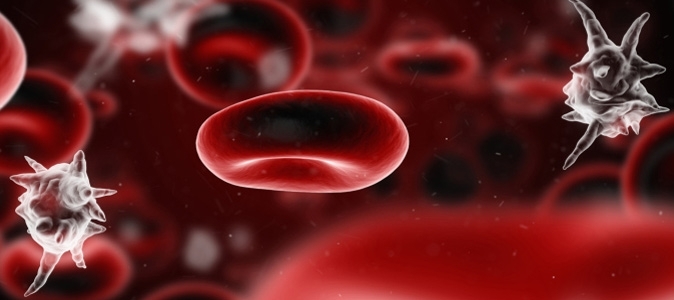

Trials performed at the University of São Paulo's Ribeirão Preto Medical School win award at Paris symposium and may contribute to the diagnosis and treatment of the most fatal disease in Brazilian ICUs (image: CDC)
Trials performed at the University of São Paulo's Ribeirão Preto Medical School win award at Paris symposium.
Trials performed at the University of São Paulo's Ribeirão Preto Medical School win award at Paris symposium.

Trials performed at the University of São Paulo's Ribeirão Preto Medical School win award at Paris symposium and may contribute to the diagnosis and treatment of the most fatal disease in Brazilian ICUs (image: CDC)
By Karina Toledo
Agência FAPESP – Experiments performed at the University of São Paulo’s Ribeirão Preto Medical School (FMRP-USP) in Brazil suggest a possible correlation between severe sepsis and the expression of a cellular receptor called the aryl hydrocarbon receptor (AHR).
“Using an induced sepsis model, we observed an increase in the expression of this receptor in surviving animals. The expression was reduced in lethal cases compared with that in surviving animals,” said Andressa de Freitas Mendes Dionisio, author of the study and winner of the Young Investigator Award at the Sepsis 2014 International Symposium held in Paris in December. This research is supported by FAPESP via a post-doctoral scholarship.
If the results are confirmed in new trials, AHR may become a marker to help diagnose and evaluate the prognosis of sepsis patients, according to Freitas.
Moreover, this discovery paves the way for the development of new drugs against sepsis, which is the leading cause of death in intensive care units (ICUs) and one of the main causes of late hospital mortality in Brazil.
Sepsis, also known as generalized infection or septicemia, is characterized by potentially fatal systemic inflammation. The inflammatory response may persist even after the primary infection has resolved, producing changes in body temperature, arterial pressure, heart rate, white blood cell count and breathing. The more severe forms of sepsis can also cause simultaneous dysfunction or failure of several organs; this condition is known as septic shock.
In 2009, while working on her PhD, Freitas observed that death from sepsis in animal models is concomitant with the migration of neutrophils to the initial focus of infection. Neutrophils are a type of white blood cell involved in defending the body against infection.
The study also showed that the inflammatory cytokine interleukin-17 (IL-17) plays a crucial role in neutrophil recruitment by the immune system.
“At the time, we observed that animals that did not express the receptor for IL-17 more frequently died from sepsis. Later research by other groups showed that AHR activation is important to trigger IL-17 production. Thus, we decided to study the expression of this receptor in a severe sepsis model,” Freitas said.
In the laboratory, sepsis was induced in mice by cecal ligation and puncture (CLP), a procedure that involves puncturing the cecum, which is part of the large intestine, and allowing feces and intestinal bacteria to spill into the peritoneal cavity. Approximately six hours after the procedure, the rodents presented clinical signs of sepsis.
“This model simulates suppurative appendicitis or conditions typical in patients with bowel perforation due to gunshot or stab wounds,” Freitas said.
The severity of the condition varied according to the size of the needle used in the CLP procedure. The animals were divided into three groups: lethal sepsis (100% mortality), sublethal sepsis (0% mortality), and control. The control group consisted of mice submitted to surgery to open the peritoneal cavity but without intestinal perforation (sham surgery) and, hence, without sepsis.
The animals were sacrificed approximately 18 hours after sepsis induction, and AHR expression was assessed in organs such as the lung, liver and spleen, as well as in some types of defense cells in the blood.
Confirming the initial hypothesis, the test results showed increased AHR expression in the sublethal group compared with the control group.
The increase averaged 42% in the spleen, 212% in the lung and 983% in the liver. For the lethal group, the increase in AHR expression was lower than for surviving animals, averaging 52%, 62% and 51% in the spleen, lung and liver, respectively.
Therapeutic option
Another experiment involved inducing moderate sepsis in mice; this caused approximately 40% mortality. The researchers then tested treatment with FICZ (6-formylindolo[3,2-b]carbazole), a substance that activates AHR. This treatment increased the survival rate of the treated group to 80%.
According to Freitas, this result paves the way for a new therapeutic approach to sepsis.
The research is being conducted at the Center for Research on Inflammatory Diseases (CRID), which is one of the Research, Innovation & Diffusion Centers (CEPIDs) supported by FAPESP.
The group is currently trying to discover why AHR expression is low in severe sepsis. One hypothesis is that low AHR expression is due to a very intense inflammatory response.
The next step will be to measure IL-17 production in animals with lethal and sublethal sepsis. The researchers also plan to analyze tissue samples from surviving patients and patients who have died from sepsis to assess whether the correlation observed in mice also exists in humans.
Republish
The Agency FAPESP licenses news via Creative Commons (CC-BY-NC-ND) so that they can be republished free of charge and in a simple way by other digital or printed vehicles. Agência FAPESP must be credited as the source of the content being republished and the name of the reporter (if any) must be attributed. Using the HMTL button below allows compliance with these rules, detailed in Digital Republishing Policy FAPESP.





